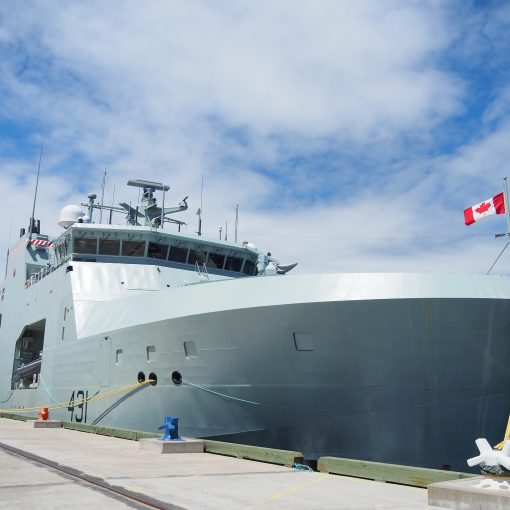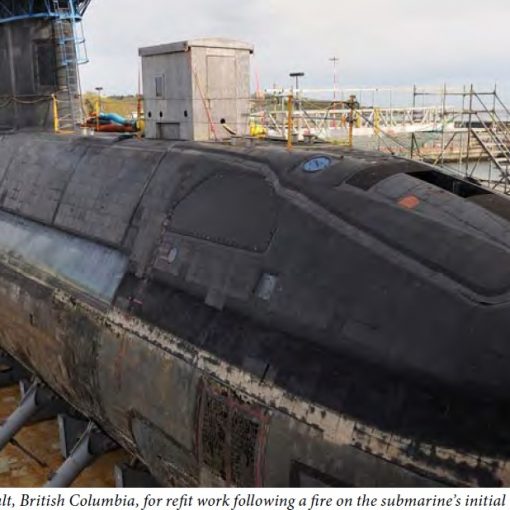Moderator’s Note: This article was original published in The Chronicle Herald on 12 February 2012.
Many of you who have followed the National Ship Procurement Strategy (NSPS) announcements will no doubt have heard that the first contract to be negotiated will be for a new class of ship, the Arctic/Offshore Patrol Ship, commonly referred to as AOPS.
What may not be well understood by most Canadians is that this vessel will not only improve the Royal Canadian Navy’s (RCN’s) capabilities but it also represents a strategic asset for the government. This is due to the unprecedented potential it offers to the many other government departments that are engaged in Canada’s Northern Strategy – the development and protection of our Far North.
In essence, the AOPS is a big empty ship, with the potential to embark doctors, dentists, scientists, marine biologists, police and fisheries officers, environmentalists and many other personnel with an interest in, or a mandate for, the development and sustainment of Canada’s north. Although the AOPS is not an icebreaker, because of its heavily reinforced hull it will be able to operate in or near first year ice. So the AOPS is truly the embodiment of the “Whole of Government” approach that the Government of Canada has articulated in its Northern Strategy.
This means that the capabilities inherent in the AOPS, although operated and maintained by the RCN, will be available to all manner of departments, agencies and personnel for extended periods of time on station in the arctic and for longer portions of the year. Not since the late 1950s has Canada had this type of capability to collaborate with our other partners in the safety, security and development of the north. It will allow the RCN to work more closely and more often with our Canadian Coast Guard colleagues, the true masters of the arctic maritime domain, from which we have so much to re-learn about arctic operations. Through this collaboration we will be better able to support other departments by maintaining a more persistent, prolonged and robust maritime presence in our third ocean.
We will also be able to reinforce and assist Transport Canada in the safeguarding of the fragile arctic ecology by adding a more robust on water presence for monitoring of and response to the Arctic Waters Pollution Control Act. As well, we will have the potential to support National Resources Canada with arctic seabed mapping so that charts and maps of the arctic be maintained in a more current and up to date manner. This will serve to forestall and avert the disastrous consequences from potential incidents of grounding on uncharted hazards or shoals. In fact, we are already beginning to experience increased oceans-based economic development from the rise in eco-tourism adventure cruises, which will only increase with the shipping activity that will occur as the arctic seabed is mapped and explored for potential mineral and fossil fuels extraction.
We have only to look at last summer, when for the first time the North Eastern Sea Route along the Russian coastline remained accessible, with icebreaker support, for 141 days and allowed a record 34 barges to pass through, including the biggest ship ever, a Russian
‘Suezmax’-class tanker loaded with 120,000 tons of gas condensate, which sailed from the Atlantic to the Pacific Ocean in a record eight days!
Added to that is the fact that China is building the world’s largest ice-breaker, and has ordered a second one to begin construction this year, and India, another non-arctic nation, is also building an arctic ice-breaker. The rest of the world is becoming more interested in our backyard.
The good news for Canadians, is that with the Arctic/Offshore Patrol Ship, the RCN will acquire a multi-dimensional capability that will not only align with other departments but will actually enhance Canada’s overall ability to further our interests in our third ocean estate. The even better news is that we will build and operate them right here in Atlantic Canada.



